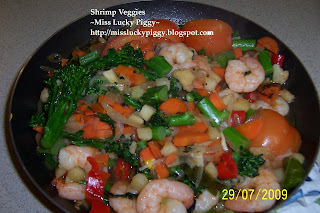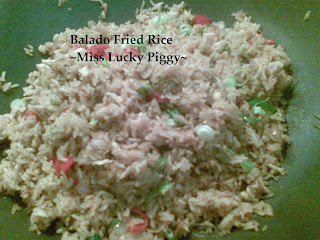There are three truths—traditionally called three marks—of our existence: impermanence, suffering, and egolessness. Even though they accurately describe the rock-bottom qualities of our existence, these words sound threatening. It’s easy to get the idea that there is something wrong with impermanence, suffering, and egolessness, which is like thinking that there is something wrong with our fundamental situation. But there’s nothing wrong with impermanence, suffering, and egolessness; they can be celebrated. Our fundamental situation is joyful.
Impermanence is the goodness of reality. Just as the four seasons are in continual flux, winter changing to spring to summer to autumn; just as day becomes night, light becoming dark becoming light again—in the same way, everything is constantly evolving. Impermanence is the essence of everything. It is babies becoming children, then teenagers, then adults, then old people, and somewhere along the way dropping dead. Impermanence is meeting and parting. It’s falling in love and falling out of love. Impermanence is bittersweet, like buying a new shirt and years later finding it as part of a patchwork quilt.
People have no respect for impermanence. We take no delight in it; in fact, we despair of it. We regard it as pain. We try to resist it by making things that will last—forever, we say—things that we don’t have to wash, things that we don’t have to iron. Somehow, in the process of trying to deny that things are always changing, we lose our sense of the sacredness of life. We tend to forget that we are part of the natural scheme of things.
Impermanence is a principle of harmony. When we don’t struggle against it, we are in harmony with reality. Many cultures celebrate this connectedness. There are ceremonies marking all the transitions of life from birth to death, as well as meetings and partings, going into battle, losing the battle, and winning the battle. We too could acknowledge, respect, and celebrate impermanence.
But what about suffering? Why would we celebrate suffering? Doesn’t that sound masochistic? Our suffering is based so much on our fear of impermanence. Our pain is so rooted in our one-sided, lopsided view of reality. Whoever got the idea that we could have pleasure without pain? It’s promoted rather widely in this world, and we buy it. But pain and pleasure go together; they are inseparable. They can be celebrated. They are ordinary. Birth is painful and delightful. Death is painful and delightful. Everything that ends is also the beginning of something else. Pain is not a punishment; pleasure is not a reward.
Inspiration and wretchedness are inseparable. We always want to get rid of misery rather than see how it works together with joy. The point isn’t to cultivate one thing as opposed to another, but to relate properly to where we are. Inspiration and wretchedness complement each other. With only inspiration, we become arrogant. With only wretchedness, we lose our vision. Feeling inspired cheers us up, makes us realize how vast and wonderful our world is. Feeling wretched humbles us. The gloriousness of our inspiration connects us with the sacredness of the world. But when the tables are turned and we feel wretched, that softens us up. It ripens our hearts. It becomes the ground for understanding others. Both the inspiration and the wretchedness can be celebrated. We can be big and small at the same time.
Can we also celebrate egolessness? Often we think of egolessness as a great loss, but actually it’s a gain. The acknowledgment of egolessness, our natural state, is like regaining eyesight after having been blind or regaining hearing after having been deaf. Egolessness has been compared to the rays of the sun. With no solid sun, the rays just radiate outward. In the same way, wakefulness naturally radiates out when we’re not so concerned with ourselves. Egolessness is the same thing as basic goodness or buddha nature, our unconditional being. It’s what we always have and never really lose.
Ego could be defined as whatever covers up basic goodness. From an experiential point of view, what is ego covering up? It’s covering up our experience of just being here, just fully being where we are, so that we can relate with the immediacy of our experience. Egolessness is a state of mind that has complete confidence in the sacredness of the world. It is unconditional well-being, unconditional joy that includes all the different qualities of our experience.
So how do we celebrate impermanence, suffering, and egolessness in our everyday lives? When impermanence presents itself in our lives, we can recognize it as impermanence. We don’t have to look for opportunities to do this. When your pen runs out of ink in the middle of writing an important letter, recognize it as impermanence, part of the whole cycle of life. When someone’s born, recognize it as impermanence. When someone dies, recognize it as impermanence. When your car gets stolen, recognize it as impermanence. When you fall in love, recognize it as impermanence, and let that intensify the preciousness. When a relationship ends, recognize it as impermanence. There are countless examples of impermanence in our lives every day, from the moment we wake up until we fall asleep and even while we’re dreaming, all the time. This is a twenty-four-hour-a-day practice. Recognize impermanence as impermanence.
Then we can recognize our reaction to impermanence. This is where curiosity comes in. Usually we just react habitually to events in our lives. We become resentful or delighted, excited or disappointed. There’s no intelligence involved, no cheerfulness. But when we recognize impermanence as impermanence, we can also notice what our reaction to impermanence is. This is called mindfulness, awareness, curiosity, inquisitiveness, paying attention. Whatever we call it, it’s a very helpful practice, the practice of coming to know ourselves completely.
When suffering arises in our lives, we can recognize it as suffering. When we get what we don’t want, when we don’t get what we do want, when we become ill, when we’re getting old, when we’re dying—when we see any of these things in our lives, we can recognize suffering as suffering. Then we can be curious, notice, and be mindful of our reactions to that. Again, usually we’re either resentful and feel cheated somehow, or we’re delighted. But whatever our reaction is, it’s usually habitual. Instead, we could see the next impulse come up, and how we spin off from there. Spinning off is neither good nor bad; it’s just something that happens as a reaction to the pleasure and pain of our existence. We can simply see that, without judgment or the intention to clean up our act.
When egolessness arises, we can recognize it as egolessness—a fresh moment, a clear perception of a smell or a sight or a sound, a feeling of opening to emotions or thoughts rather than closing off into our narrow limited selves. When we perceive the spaciousness in our lives, when we sense a gap in the continual conversation we have with ourselves, when we suddenly notice what’s in front of us, when we take a fresh, clear, unedited look at reality, we can recognize it as egolessness. It doesn’t have to be a big deal. Egolessness is available all the time as freshness, openness, delight in our sense perceptions. Curiously enough, we also experience egolessness when we don’t know what’s happening, when we’ve lost our reference point, when we get a shock and our mind is stopped. We can notice our reactions to that. Sometimes we open further; sometimes we quickly shut down. In any case, when egolessness occurs in our lives, we can recognize it as egolessness. We can notice, be curious, be mindful of our reactions and of what happens next.
Often peace is taught as the fourth mark of existence. This isn’t the peace that’s the opposite of war. It’s the well-being that comes when we can see the infinite pairs of opposites as complementary. If there is beauty, there must be ugliness. If there is right, there is wrong. Wisdom and ignorance cannot be separated. This is an old truth—one that men and women like ourselves have been discovering for a long time. Cultivating moment-to-moment curiosity, we just might find that day by day this kind of peace dawns on us, and we begin to understand what all the books have been talking about.
So don’t take anything for granted, and don’t believe everything you’re told. Without being cynical or gullible, look for the living quality of the dharma. Recognize impermanence and suffering and egolessness at the kitchen-sink level, and be inquisitive about your reactions. Find out for yourself about peace and whether or not it’s true that our fundamental situation is joyful. EH
Taken from Eastern Horizon, Buddhist Magazine













